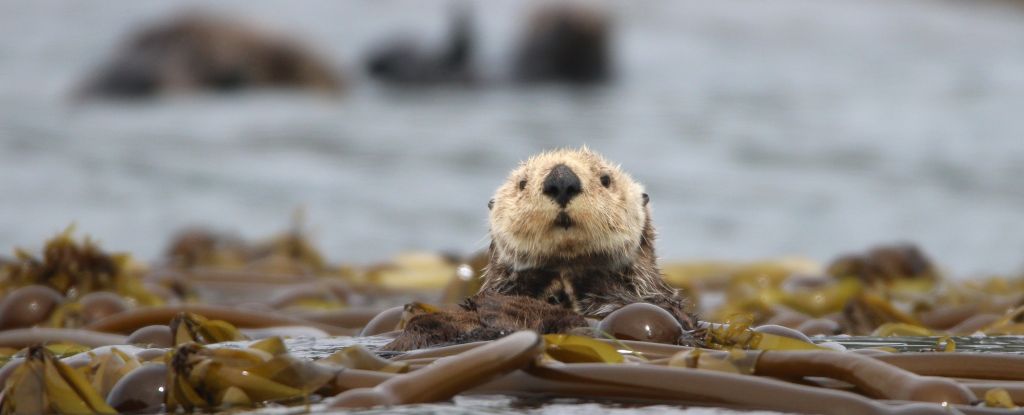An orca whose eyes were bigger than her belly seems to have choked while gulping down one last, seemingly unusual meal.
She was found dead in Russian waters in 2020; a subsequent autopsy revealed that her stomach was full of otters. She’d managed to cram six of the animals in there, whole; but a seventh otter seems to have been her downfall.
That last otter mouthful was found firmly lodged in her throat. Scientists speculate that this was the cause of death.
WARNING: A graphic image of the orca and six of the otters extracted from her stomach can be seen further down the page.
But that’s not the truly interesting thing about the discovery.
The orca and her last meal represent the first direct evidence of orca predation on sea otters in the Commander Islands off the far eastern coast of Russia. This is information that is relevant to our understanding of how these magnificent animals live – and what we can do to protect them in a changing climate.
All the world’s orcas are currently classified under a single species, Orcinus orca, but there’s a growing body of evidence that different regional groups belong to different subspecies, or even species. These groups prey on different food and have their own hunting strategies and their own cultures, depending on what’s available.
Known orca prey include salmon, seals and sea lions, sharks, and whales. Predation on sea otters is rarely seen, if at all. In the 1990s, a decline in sea otters was noticed in Alaska and the Aleutian Islands. Orcas were suspected, and even spotted attacking sea otters, but there was little direct evidence of consumption.
Some orcas in that region belong to a subgroup known as Transient, or Bigg’s, orcas. Their genome is distinct from that of other orcas; nor do they interbreed with other groups. They travel in smaller groups, and their diet seems to consist mostly of mammalian prey – seals, sea lions, whales, dolphins, and porpoises.
For all this preferred diet, however, only one orca attack on sea otters had been documented since the 1970s in the Commander Islands. And it’s not like we can just mosey up to an orca and ask what they ate for lunch.
But on 14 April 2020, an orca carcass was discovered washed up on the beach of Bering Island, in a moderate state of decomposition. She was an adult female, measuring 6.3 meters (around 20 feet) in length, and showed no obvious signs of injury.
Upon inspecting the contents of her stomach, a team of scientists led by biologist Sergey Fomin of the Kamchatka Branch of the Pacific Geographical Institute of the Russian Academy of Sciences found her peculiar meal. Six whole sea otters (Enhydra lutris), with a seventh stuck in her throat, head pointing towards her stomach.
They also found 256 upper and lower parts of cephalopod beaks in her gastrointestinal tract, suggesting that these orcas also partake of the more-than-occasional squid.
Even with a throat full of otter, though, the orca’s cause of death is difficult to determine with certainty. The researchers found clear signs of vaginal prolapse, which can’t be ruled out as a factor. It seems more likely, however, that the otter got stuck on the way down her gullet, resulting in asphyxiation.
“The fact that the sea otter remained stuck in her esophagus can possibly indicate that it was actually the cause of death, blocking her respiratory tract,” the researchers write in their paper.
“Fatal asphyxiation resulting from fish lodged in the esophagus has been reported in bottlenose dolphins. Therefore, it is likely that the killer whale died of asphyxiation caused by the sea otter stuck in her esophagus. It is also possible that the asphyxiation may have caused a stillbirth and the vaginal prolapse.”
The findings, the researchers say, while tragic, offer some insight into the diet of Bigg’s orcas, but raise more questions. Are the cephalopods and otters typical fare for these orcas? Is it a specialization developed by the pod to which this orca belonged, to circumvent competition for more typical prey? And is normal prey becoming more scarce, resulting in the need for new strategies?
Let’s hope we may not be waiting too long for more answers.
The research has been published in Aquatic Mammals.





